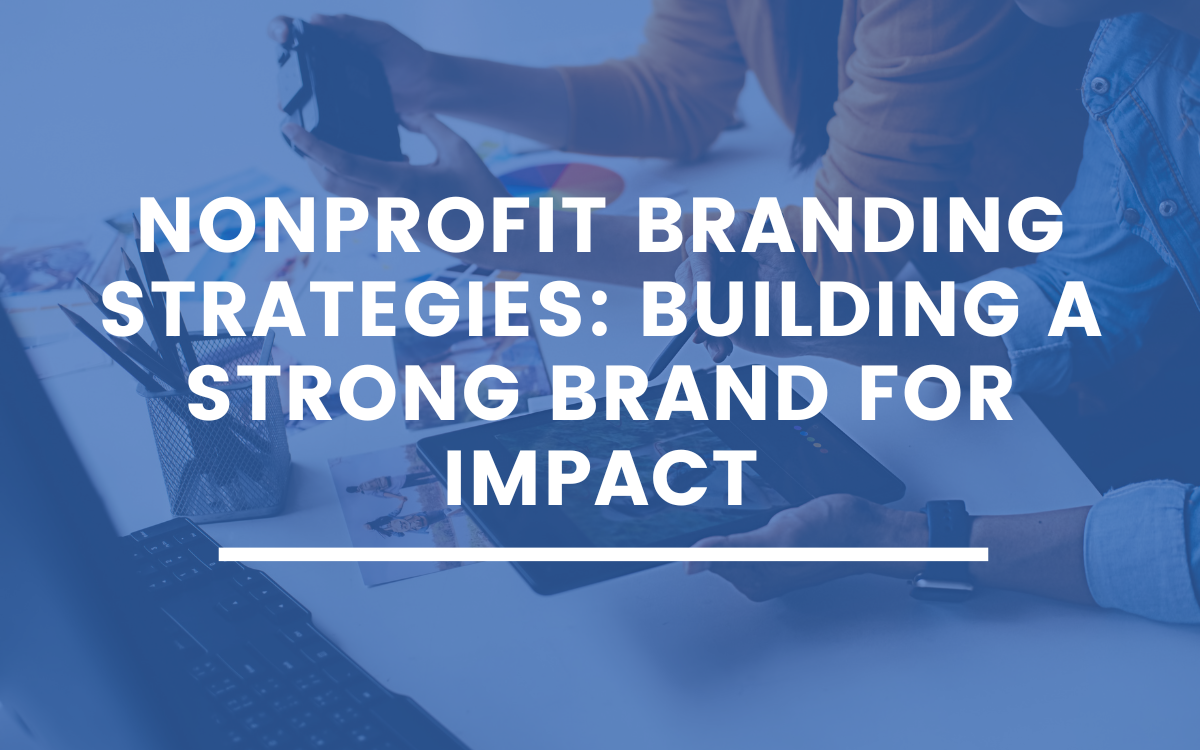Nonprofit Branding Strategies: Building a Strong Brand for Impact
min to read ✭
Nonprofit branding is having a moment.
As our culture and economy becomes more digitized and the number of messages we consume increases (researchers estimate the average person sees up to 10,000 ads each day) branding is a tool many organizations are using to stand out and build trust among audiences.
Branding goes beyond information, features, and benefits to express the intangible ways we find and cultivate value in everyday life: in purpose, values, personality, community…
But despite its prominence in the for-profit space, the idea of nonprofit branding has been slow to take root among nonprofits. It’s not that nonprofit leaders doubt the importance of branding—more than 90% recognize a strong brand identity has a positive impact on donor engagement. But some persistent misunderstandings have made it difficult for many nonprofits to prioritize their brands.
Understanding Nonprofit Branding and Its Impact

In the nonprofit space, the idea of branding carries a lot of baggage.
There’s a sense among some nonprofit leaders that words like “branding” and “marketing” belong in the for-profit realm; that, at best, they’re a necessary evil, and at worst, they’re a drain on already-scarce resources that could otherwise be used to support their programs and services.
Branding has competitive connotations too, which, in the nonprofit space, can feel a bit uncomfortable. Nonprofits aren’t selling anything, after all, and it hardly makes sense for one youth development organization, for example, to “compete” against another when both share similar missions and may even serve the same people.
As for communicating values and purpose, nonprofits already tend to wear this aspect of branding on their sleeves. Purpose is at the core of what nonprofits do, as opposed to for-profit companies, which sometimes spend great sums of money establishing the connection between, say, the cardboard boxes they manufacture and environmental sustainability.
When it comes down to it, nonprofits already possess something that many for-profit companies would pay fortunes for: real significance and a passionate audience.
But a brand is more than a mission, and while nonprofits enjoy certain advantages when it comes to branding, they also have their own unique challenges.
Overcoming Brand Confusion with Clear Messaging

Nonprofits are unique in that they must consistently engage with multiple audiences that are very different from one another. There are the people and communities the organization serves, and the staff, supporters, and volunteers who make that service possible.
The organizational model that emerges from this tension is likewise divided: on one side is the organization’s mission and work, and on the other, the fundraising engine that powers it. While these divisions both ultimately serve the same purpose, they involve very different audiences, objectives, and tactics.
Without a strong brand to help maintain alignment and focus, this dissonance can create a kind of brand confusion that has the potential to undermine both sets of objectives and—ultimately—the brand itself.
Role of Brand Ambassadors in Nonprofit Branding
Nonprofits don’t have the benefit of focusing on one or even two audiences. They must build trust with the people they serve while attracting and retaining donors and volunteers.
One of the primary ways branding helps with this is through differentiation. Not only does differentiation highlight the benefits of an organization relative to others, it also helps clarify what an organization actually does. How does one youth development program differ from all the others? This is information that clients, donors, staff, and potential partners all need to know in order to make decisions and fully understand the opportunity.
Differentiation often comes from specificity, which itself has a major impact on how people feel about their support. Compare donating to a youth development organization versus donating to one that provides marginalized youth with fun and inspiring career exploration opportunities after school. Which would you feel better about supporting?
Differentiation helps supporters better understand the impact their gift will make and thus feel more engaged in it. Strong brands integrate this idea into the ways they understand and communicate about themselves and their work.
Empowering Brand Ambassadors

In his book, The Brand Gap, Marty Neumeier explains that “A brand is not what YOU say it is. It’s what THEY say it is.” He goes on to describe the fact that no one person or department has control over what their brand ultimately becomes. You can influence it with disciplined communications, but your brand exists independent of those efforts, and if you don’t take control of the narrative, someone else will do it for you.
One challenge nonprofits face is making sure their staff, volunteers, and supporters all share a consistent narrative. After all, people support causes for all different reasons. In many ways, these individual touchpoints are what make nonprofit cultures so rich. However, it’s important that we devote adequate focus to those aspects of the story we share.
A strong brand empowers participants to be more than just supporters. They become brand evangelists with the potential to do more for your organization than paid advertising ever could.
It’s not a matter of giving them each a script or a set of talking points (although effective messaging is certainly a plus). It’s about creating a culture where your supporters feel empowered and inspired to share what your organization means to them. The more effective your nonprofit’s brand is, the more reliable and consistent this message will be.
Working With Brand Professionals
In the end, strong brands are just as important for nonprofits as they are for-profit companies, even if they function differently. Where for-profit companies are working to expand the scope of their company’s mission beyond generating wealth, nonprofits must work to consolidate and integrate their various operating capacities into a singular brand that supports multiple objectives and audiences.
Of course, anyone who’s given thought to their personal brand knows this is easier said than done. There’s a saying that goes, “It’s hard to read the message from inside the bottle.” Meaning: It’s difficult to filter out all of the knowledge and nuance we have about ourselves to capture the essence of our identities.
Qualified branding professionals have the experience and expertise to help you get to the core of who you are and express it in a way that supports your strategic objectives.
It’s a lot to take on. Many organizations don’t recognize how important their branding is until they start trying to change it. In addition to their branding expertise, experienced professionals will come equipped with processes and strategies for soliciting feedback and buy-in from your community.
But if working with professionals just doesn’t make sense right now, there are also many things you can do on your own to strengthen your brand. You can follow the tips in this article to boost your brand’s visual presence, and you can also start having internal conversations to assess the overall health and suitability of your brand with regard to your organization’s goals and objectives.
Particularly if you’re developing a new strategic plan, this is a great time to begin discussing who you are and where you’re going, and how your current way of talking about yourselves and your mission might either support or impair your progress.





